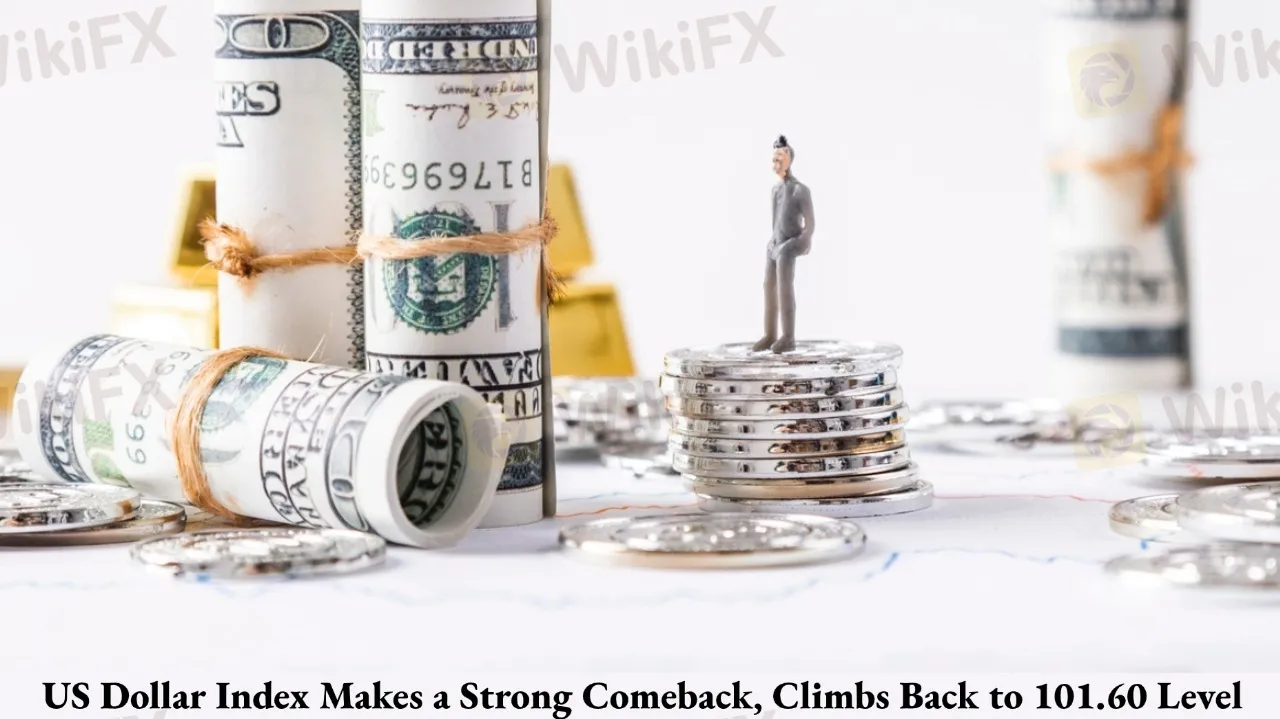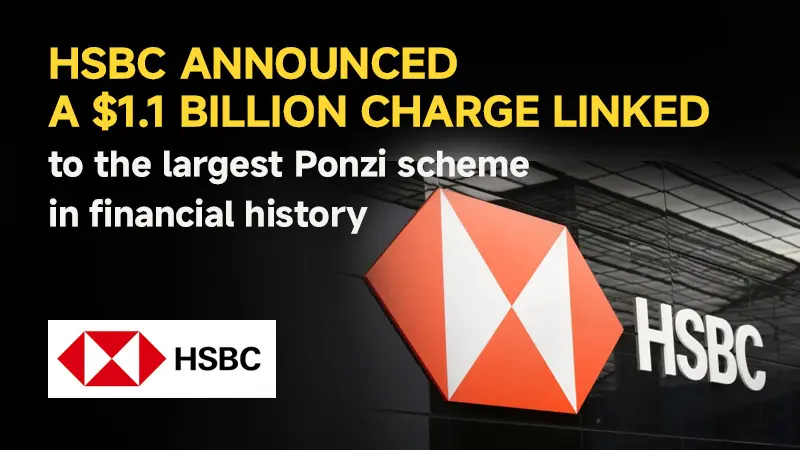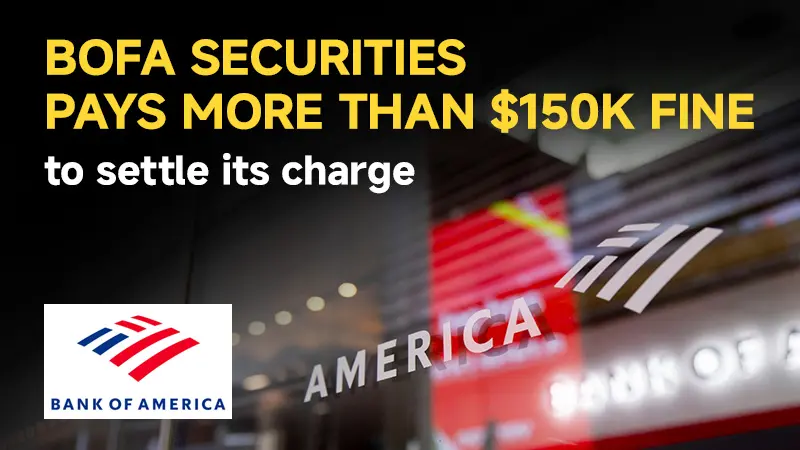简体中文
繁體中文
English
Pусский
日本語
ภาษาไทย
Tiếng Việt
Bahasa Indonesia
Español
हिन्दी
Filippiiniläinen
Français
Deutsch
Português
Türkçe
한국어
العربية
US Dollar Index Makes a Strong Comeback, Climbs Back to 101.60 Level
Abstract:The US Dollar Index has surged back above 101.60, breaking out of a multi-week consolidation. Boosted by trade truce optimism and technical breakouts, market sentiment has shifted sharply, placing investors at a crucial decision point.

On May 12, the US Dollar Index staged a powerful rally, reclaiming the key 101.60 level after weeks of lackluster movement. Since bottoming at 97.92 in late March, dollar bulls have been gathering strength but lacked a clear catalyst for breakout—until now. The recent surge reflects a meaningful shift in market sentiment, underpinned by changes in fundamental dynamics.
Dollar Regains Popularity
The immediate trigger for the rally was the announcement of a 90-day trade truce between China and the US, featuring significant tariff reductions. This development improved global trade prospects and boosted risk appetite across financial markets. Simultaneously, the US 10-year Treasury yield jumped to 4.45%, near highs not seen since early April. The widening interest rate differential between the US and other economies further enhanced the dollars relative appeal.
Expectations for a Federal Reserve rate cut were also quickly revised. According to CME FedWatch, the probability of a rate cut in June has dropped to just 7.9%, while July's odds have fallen to about 44.1%. This shift has helped reinforce the dollar's medium-term outlook and led investors to re-evaluate carry trade strategies.
Technically, the DXY has entered a clear upward channel on the daily chart, breaking above the 101.50 resistance and testing the 102.20 level. The MACD has formed a bullish crossover, the RSI stands at 56.53 (in a neutral-to-strong zone), and the CCI continues to rise—indicating strong momentum.
The appearance of a V-shaped bottom further strengthens confidence in a medium-term reversal. This confluence of technical and fundamental support makes a compelling case for dollar bulls. However, with the index nearing short-term overbought levels, some correction toward 101.20 or even 99.00 cannot be ruled out.
Investors Must Beware of Overexuberance
While the trade détente offers near-term relief, challenges remain. The Fed‘s policy path is still uncertain, and weak economic data in the future could reignite dovish expectations. Furthermore, the dollar’s sharp gains have triggered potential overbought signals, making a short-term pullback increasingly likely.
For investors, the key challenge lies in balancing optimism with risk awareness. The Fear & Greed Index has tilted sharply toward “Greed,” suggesting elevated risk of correction. Although institutional flows show growing long positions in the dollar—a typical sign of trend strength—investors should remain cautious of abrupt reversals.
The US Dollar Index‘s return above 101.60 showcases a strong rebound, but the road ahead is not without bumps. Investors entering long positions must remain vigilant, watch for technical corrections, and adjust strategies accordingly. A blend of macro awareness and technical discipline will be vital to navigating the next phase of this dollar cycle. Are you ready for what’s next in the USD comeback story?
Understanding the U.S. Dollar Index (DXY)
The U.S. Dollar Index (DXY) is a key benchmark that measures the value of the U.S. dollar against a basket of major global currencies. Created in 1973 by the Intercontinental Exchange (ICE), the index is designed to provide a broad indication of the dollars overall strength or weakness in the global market.
The DXY is composed of six currencies: the euro (EUR), Japanese yen (JPY), British pound (GBP), Canadian dollar (CAD), Swedish krona (SEK), and Swiss franc (CHF). However, these currencies are not weighted equally. Their weights are determined based on the volume of U.S. trade with the respective regions, making the euro the most influential, with a weight of approximately 57.6%. This is followed by the yen at 13.6%, the pound at 11.9%, and the remaining currencies at smaller percentages.
Because of this weighting system, movements in the euro have the most significant impact on the index. In simple terms, when the euro strengthens against the dollar, the DXY tends to decline. Conversely, a weaker euro often pushes the DXY higher.
You can think of this in terms of “distance of influence.” The euro is the closest to the “center” of influence, so its movements carry more weight. Currencies like the Swedish krona and Swiss franc are “further” from this center, meaning their impact on the index is relatively limited.
This structure explains why the U.S. dollar might appear strong against some currencies, but the DXY still falls if the euro is rallying. For traders and investors, understanding how the DXY is built and what drives it can help provide deeper insight into market sentiment and directional trends.
When analyzing dollar strength, monitoring the EUR/USD pair is especially critical. As the largest component of the index, its fluctuations can often foreshadow broader shifts in dollar performance. In summary, the DXY is not just a number—it‘s a reflection of the dollar’s position in a complex, weighted network of global currency relationships.

Disclaimer:
The views in this article only represent the author's personal views, and do not constitute investment advice on this platform. This platform does not guarantee the accuracy, completeness and timeliness of the information in the article, and will not be liable for any loss caused by the use of or reliance on the information in the article.
Read more

Voices of the Golden Insight Award Jury | David Bily, Founder and CEO of Moneta Markets
WikiFX Golden Insight Award uniting industry forces to build a safe and healthy forex ecosystem, driving industry innovation and sustainable development, launches a new feature series — “Voices of the Golden Insight Awards Jury.” Through in-depth conversations with distinguished judges, this series explores the evolving landscape of the forex industry and the shared mission to promote innovation, ethics, and sustainability.

ASIC Launches Preliminary Investigation into Clime Australian Income Fund
The Australian Securities and Investments Commission (ASIC) has launched a preliminary investigation into the Clime Australian Income Fund, examining whether the Fund’s Target Market Determination (TMD) and Product Disclosure Statement (PDS) comply with Australian financial regulations. The investigation will also assess whether any breaches of the law have occurred in relation to the Fund’s investment activities.

HSBC announced a $1.1 billion charge linked to the largest Ponzi scheme in financial history
The British banking giant HSBC Holdings Plc has announced a potential $1.1 billion charge connected to the long-running Bernard Madoff Ponzi scheme, following a legal ruling in Luxembourg. The claim stems from Herald Fund, a European investment fund that sued HSBC over alleged losses related to the Madoff fraud.

BofA Securities pays more than $150K fine to settle its charge
BofA Securities, Inc. (BofAS) has agreed to pay a $155,000 fine and accept a censure from the Financial Industry Regulatory Authority (FINRA) after FINRA found multiple violations of market trading and supervisory rules.
WikiFX Broker
Latest News
MH Markets Review 2025: Trading Platforms, Pros and Cons
Octa FX in Pakistan: The Complete Guide to Local Payments, Regulation, and Support
Mekness Review: Traders Report Alleged Fund Scams & Account Blocks
INTERPOL, AFRIPOL Crack Down on Africa Terror Finance
Forex Scam Checker Philippines: Verify Brokers with WikiFX
D Prime to Exit Limassol Office Amid Doo Group Restructure
Fake Trading Platforms Are Spreading Fast Across Asia | How Investors Are Being Tricked
WikiFX Elites Club Committee Concludes Voting! Inaugural Lineup Officially Announced
eToro CopyTrader Expands to U.S. Investors
Is MH Markets Safe or a Scam? Regulation and Fund Security Explained
Currency Calculator



